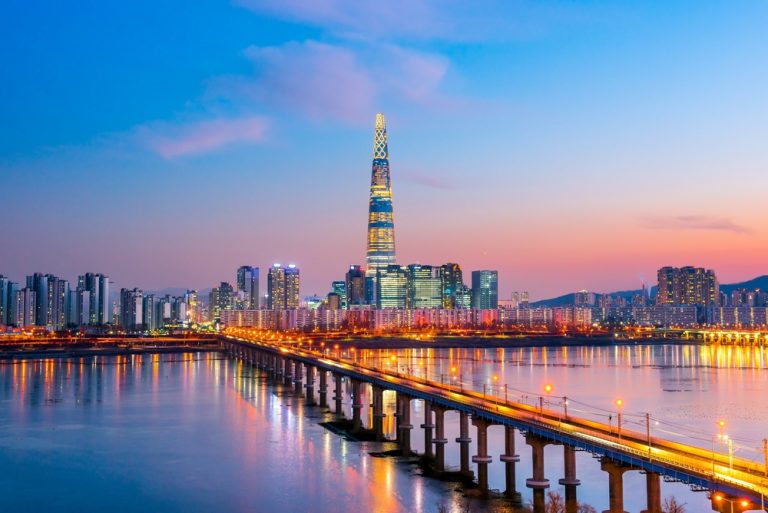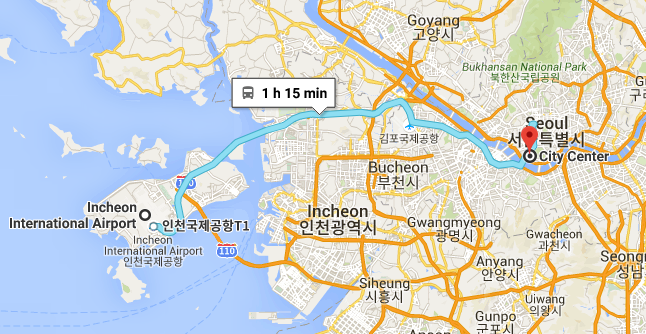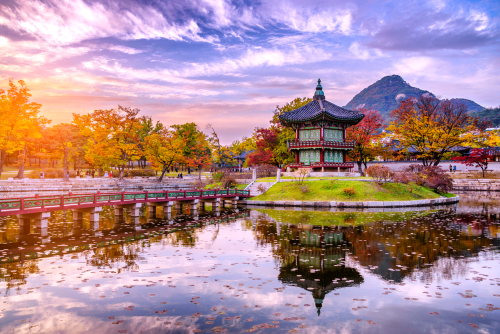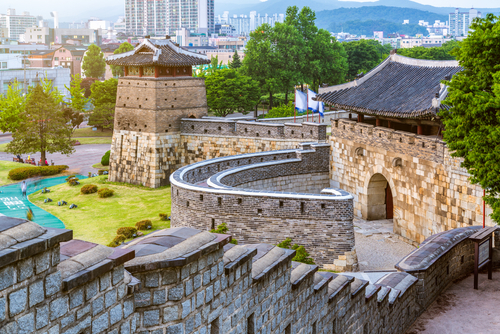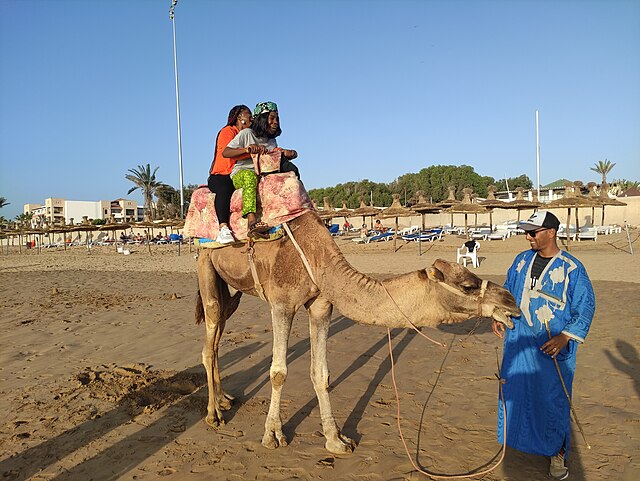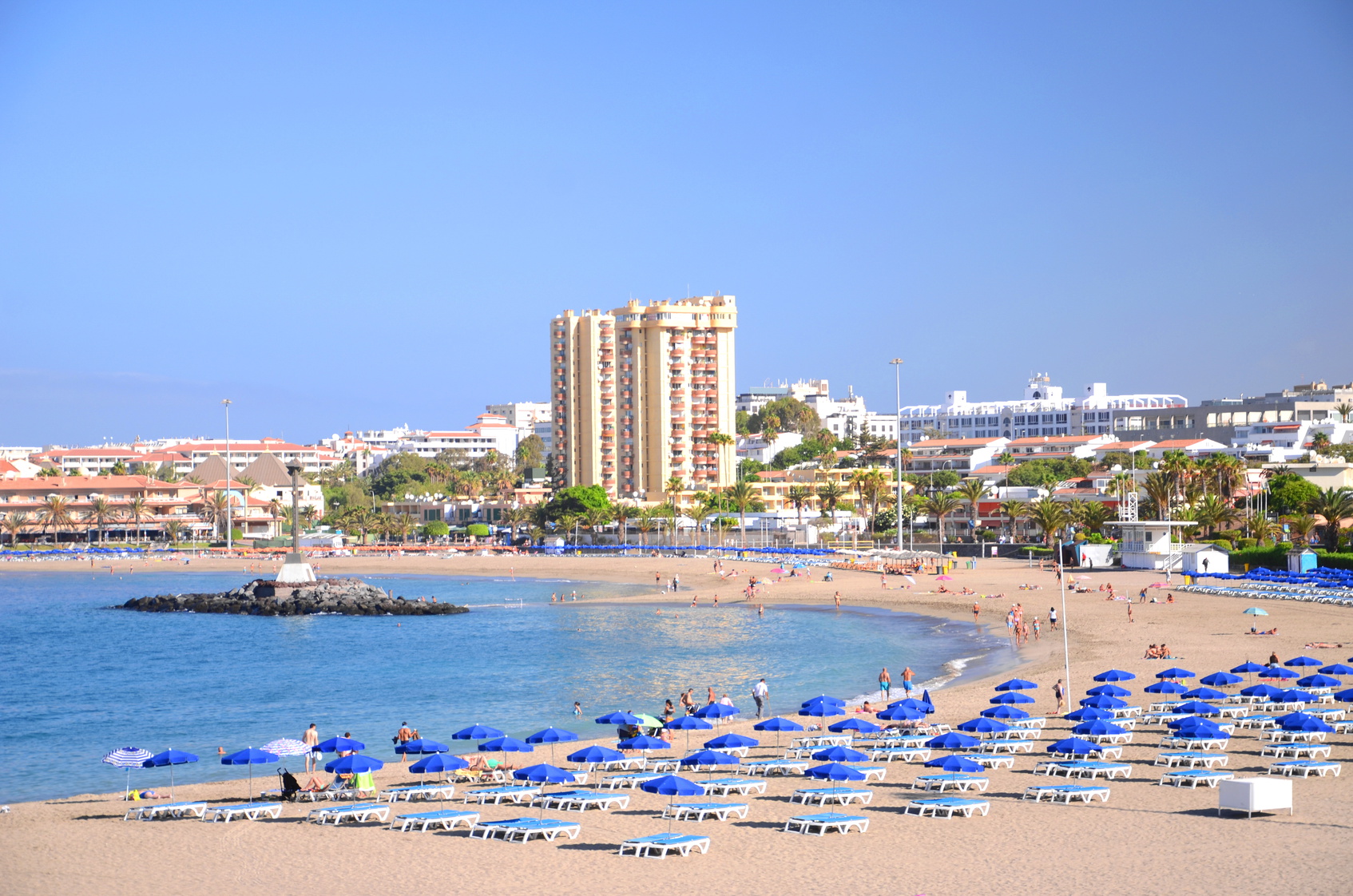The city of Seoul is the capital of South Korea. It has a population of over 10 million and metropolitan area of more than 25 million making it one of the world’s largest urban areas. Its skyline is dominated by skyscrapers whilst on the ground its residents travel around on one of the planet’s most advanced metro system. Visitors to the city come to discover its palaces and temples as well as shopping to their heart’s content whilst snacking on delicious Korean street food. Day trippers head out of town to visit the nearby Demilitarized Zone which separates North and South Korea.
The best time to visit Seoul is in spring or autumn when the weather is usually perfect for tourism. Spring can be particularly charming if your visit happens to coincide with the beautiful cherry tree blossom which appears in and around the city. The main annual event is the Seoul Lantern Festival in early November when the whole area around the Cheonggyecheon Stream is illuminated at night by traditional lanterns.
Arriving in Seoul
Seoul Airport: International flights to Seoul land at Incheon International Airport which stands on a reclaimed piece of land between Yeongjong and Yongyu Islands to the west of the capital. It is one of the busiest and best airports in the world which sees more than 60 million passengers go through its terminals every year. Facilities at the airport are second to none and include a casino and a golf course!
Airport Transfers: The fastest way to travel from Seoul–Incheon International Airport to the downtown area is by means of the Airport Railroad Express (AREX) which takes precisely 43 minutes. There’s also an excellent limousine bus service to the city centre and a stopping train service but both forms of transport take longer than the excellent AREX service.
Taxi transfers are the most expensive transfer option and there are some drivers touting for business inside the arrivals area who should be avoided. Far more reliable and better value for money are private transfers from Seoul International Airport which can be pre-booked to hotels throughout the city.
Getting Around: There’s really no need to look beyond the excellent metro system which carries over 7 million passengers per day. Visitors can buy a Metropolitan Pass (MPASS) which is valid for between one and seven days and allows for up to 20 journeys per day. There’s also an extensive bike share system which allows visitors to travel between attractions on a network of dedicated cycle lanes.
Where to Stay in Seoul
With around 2000 hotels to choose from on popular accommodation booking websites the best strategy for first time visitors to Seoul is to identify their preferred neighbourhood before deciding where to stay. Some of the most popular are as follows:
Insadong: Centrally located within walking distance of many of the city’s main tourist attractions this is the an ideal area for most tourists. Its streets are packed with shops and cafés as well as vendors selling all kinds of typical Korean street food. The area is also suitable for business travellers.
Myeongdong: This busy part of town is renowned for its plethora of shopping streets. It is a centrally located place to stay which is popular with both tourists and business travellers alike.
Hongdae: This lively university district is best suited to younger travellers looking to stay in budget accommodation. The area is packed with bars and restaurants and is well known for its late night party scene. Probably not the best choice for business travellers or mature tourists hoping to sleep at night!
Gangnam: This is the city’s wealthy business district which is dominated by enormous skyscrapers and luxury hotels. It is home to some of the city’s most expensive restaurants and is known for its great nightlife. It is best suited to business and luxury travellers.
Tourist Attractions in Seoul City
Gyeongbokgung Palace: Dating back to 1395 this was the largest of the five grand palaces constructed under the Joseon dynasty (1392–1897) and was the main royal residence. After it was destroyed by the Japanese during the Imjin War (1592–1598) the complex was abandoned for two centuries. It then underwent a massive restoration based on its original design before once again being largely demolished in the early 20th century during the Japanese occupation (1910–1945). An ongoing restoration project will eventually return the complex to its former glory. In spite of its torrid history it is one of Seoul’s main tourist attractions where visitors can wander around its many buildings and enormous gardens. The palace also houses the National Folk Museum and the National Palace Museum which are popular attractions in their own right.
Changdeokgung Palace: This compex served as a secondary royal palace for the Joseon dynasty which dates back to 1405. Its history is entwined with Gyeongbokgung having also been destroyed by the Japanese in the 1590s although it was rebuilt in 1609. Further strife saw it destroyed once again in 1623 before it was again restored in its original style. The palace served as the main royal residence whilst Gyeongbokgung was being rebuilt. Standing in stunning, landscaped gardens it is generally considered to be the most beautiful of Seoul’s grand palaces and is listed on UNESCO’s World Heritage List. Visitors can take a guided tour of the palace buildings in English at fixed times during the day or join one of the moonlight tours in the evening.
Bukchon Hanok Village: Located between the palaces of Gyeongbokgung and Changdeokgung this ancient village is home to hundreds of traditional Korean homes (hanok). Visitors can wander around the streets of this 600 year old settlement whilst stopping en route to try some typical Korean street food. The experience is a great way to gain some insight into urban life under the Joseon Dynasty.
Jogyesa Temple: Standing a short distance to the south-east of the Gyeongbokgung Palace complex, this is the country’s main temple for followers of Jogye Korean Buddhism. The original temple was first built here in the 14th century but the current version dates back to the early 20th century. Located in the lively Insa-dong district this historic building stands in sharp contrast to the surrounding skyscrapers which symbolize modern-day South Korea.
Gwangjang Market: Whilst this traditional market is filled with countless stalls selling clothes and souvenirs, its main attraction is its food market. This is perhaps the best place in the city to discover Korean street food. Visitors can grab a seat outside more than 200 eateries and sample a fine selection of the nation’s culinary delights.
War Memorial and Museum: This enormous structure located in the Yongsan-dong district is dedicated to the country’s military history. Most of the museum focuses on lessons learned from the Korean War (1950–53) in the hope of preventing future conflict and ultimately seeing a peaceful reunification of North and South Korea. Its exhibition halls contain multimedia displays footage from the war as well as tanks, planes, helicopters and weapons used during the war. It’s well worth joining one of the free tours which begin at 10am and 2pm and last for about an hour.
N Seoul Tower: Mount Namsan is a popular leisure area located in the Jung-gu district to the south of the city centre. Within its grounds is the 236 metre high N Seoul tower which provides panoramic views of the city from its observation deck. Visitors can walk or take a cable car up Mount Namsan then get a lift up the tower. It’s a great spot from which to watch the sunset before dining at the restaurant at the top of the tower.
Best Day Excursions from Seoul
Korean Demilitarized Zone: The DMZ is a 4km wide buffer zone which separates South Korea from the North. It is located approximately 50km from Seoul and runs for 250km across the Korean peninsula. Day trips to the DMZ are by far the main tourist attraction close to the capital. Most excursions begin at Camp Bonifas where tourists are given a briefing by a soldier-guide. They then proceed to the Joint Security Area (JSA) at Panmunjeom which is where all negotiations between the two sides have taken place since the war ended in 1953. At the JSA visitors can visit the conference room where these meetings take place and will see soldiers from both sides facing one another across the border. From the tour bus visitors will also see the Bridge of No Return where prisoner exchanges took place at the end of the conflict.
Technically speaking North Korea and South Korea are still at war as no peace treaty was ever signed.
Hwaseong Fortress: Another popular excursion is to this UNESCO World Heritage site which lies in Suwon some 30km south of the capital. Dating back to 1796 this is one of the country’s main historic attractions which is easily accessible from Seoul by public transport or on organised tours.
About Shuttle Direct
Shuttle Direct is the most established and respected airport transfer provider in Europe and northern Africa. Our friendly local drivers will ensure your safe, economical, and convenient passage to and from the cruise terminal, airport, or major train station of your choice with a minimum of fuss. Book your transfer with our easy to use online booking system and leave the rest up to us!

